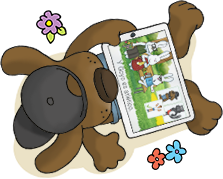Make Your Classroom Green: How to Effectively Recycle Vocabulary
Last week, Langchatters were ready for a fast-paced hour of discussion on how to effectively recycle vocabulary in the world language classroom. Participants discussed how to write their learning targets to reuse vocabulary, and shared their thoughts on getting students to understand the importance of using old vocabulary in new ways. They also talked about figuring out how to balance recycling while also working with students to expand their vocabulary. Finally, Langchatters discussed ways to improve students’ use of vocab through improved class structure and unit design.
Thank you to everyone who contributed to a lively hour of #langchat! We also extend a special thanks to our dedicated team of moderators. Kris (@KrisClimer) led the Thursday chat, with support from Colleen (@CoLeeSensei), and Diego (@DiegoOjeda66), moderated the #SaturdaySequel!
Question 1: How to write learning targets that better recycle key vocabulary?
Participant suggested a variety of ways to address the need to make key vocabulary a part of learning target preparation. Several chatters felt that including a language function that can be reproduced across themes was important, while others agreed that focusing on function naturally leads to remembering which vocabulary is important for students to use for that target. Others contributors pointed out the importance of helping bring past language to the forefront of student’s minds. @Sra_Kenneday recommended using, “…stories/tasks [that] include intros, asking how are you, describing things=naturally recycling [of] those [language] chunks.” Another popular suggestion was to start learning targets with “can do” type statements such as describing things, giving opinions, explaining actions, and so on. @Sra_Spanglish added that one of the easiest ways to accomplish vocab recycling when writing learning targets is to anticipate what language students will need and, “…build questions intentionally around familiar words (which are also in the text)” and then take it from there!
Question 2: How do we promote IMPORTANCE of recycling familiar vocabulary to students?
There were a variety of viewpoints when it came time to talk about pointing out the value of recycling vocab to students. Some chatters felt that making importance explicitly clear to students wasn’t entirely necessary since the fact that certain language comes up again and again naturally creates importance even without drawing attention to it. Others felt that the use of circumlocution games and exercises is an incredibly effective way to let students know that past vocabulary is still important while making it interesting for them, instead of redundant. @GusOnTheGo added that it’s not so much about, “… stressing importance as it is incorporating [recycled vocab] in lessons. Natural inclusion is great. “
One very popular suggestion was the use of parallel structures of stories such as fairy tales from the target language country to reinforce the importance of vocab, and help students learns to create new scenarios from there. Many agreed with @CadenaSensei’s observation to make sure and discourage the idea that it’s “…the ‘dictionary’ doing this [activity]” so that students know you’re “…asking [students] to use what [they] know!” A practical action-idea that several shared was to post essential verb posters and/or common questions words on classroom walls and remind students to branch out from their normal responses when formulating their answers.
Question 3: How to balance recycling with pushing students to venture into new, self-selected vocabulary?
Langchatters shared many great ideas for ways to make sure that recycling vocab doesn’t overshadow the need for students to find new vocabulary for themselves. Many participants agreed that the use of a “personal dictionary approach” can be effective in getting students to think about what words interest them, what words they don’t know, what words they’d like to know to express themselves, etc. A popular suggestion was the use of a student-curated word wall where students choose what words are important to them and then post the words for later use.
Another idea that participants got behind (and re-tweeted constantly) was to always include a blank section in every unit book called “Stuff We Want To Know” where each student gets to write down the things they want to learn. Similarly, @SECottrell suggested, “…always give students a list of about 7-10 words/phrases and extra space for them to write their own-and push them to do so.”
A lot of participants loved @MCoachSalato’s suggestion that, “When tackling a new topic, Ss each find a new vocab word to TEACH to the class. Even with repeats, class learns useful words.” There were several variations of the idea to have students keep lists, notebooks, etc., of words they want to know or would like to use so that they are motivated to try expanding their speaking skills.
One thing that everyone seemed to agree on was that encouraging students to self-select new vocabulary can take time, and it requires patience so that their confidence can grow.
Question 4: What “bridges” can we build between units/lessons to help students notice the “need” to re-use, core vocabulary?
In order to “bridge” the gaps that can happen between lessons (which can cause students to forget core vocab), participants shared their favorite ways to structure classes in order to avoid that breakdown. One very popular idea that came in several suggestions of varying degrees, was to create a more ‘thematic” year that would link units by topic so that students don’t feel as if they’re being tossed from topic to unrelated topic. @MlleSulewski wrote that she’s, “…started sequencing some units. [Such as] Travel & study abroad & professions.” Similarly, @CoLeeSensei said that she’s, “…using many of [her] textbook-inspired units… just altering/ adding/ morphing [them] to suit [her] needs.”
Another suggestion that langchatters loved was the idea that the right authentic resources can be extremely useful in helping to bridge units. For example, if you just had a unit on food, make your current unit about how to make plans, and then find a real restaurant menu with a daily special so that students can discuss, “When would you like to go?” which incorporates what they learned, what they’re learning, and then opens the door for the next topic. An idea that garnered lots of attention from participants was that of making sure to reuse high frequency vocab, as that naturally helps to bridge the gap between lessons. @adart_shaw stated that she likes to, “Recycle He/She likes, he/she prefers, family members, because, clothing/sports vocab…”. @MadameKurtz agreed saying the frequent use of things like favorite foods and activities naturally makes students recycle vocab like “…I love, like, hate, a lot, a little, me too.” And lots more!
Question 5: What role does instructional design play in leading students to need certain words/vocabulary?
The vast majority of langchatters agreed that getting students to need certain words/vocabulary, and in turn USE that vocabulary, falls almost solely on the instructional design that the teacher implements. It’s truly up to language teachers to lead their students to the vocab that is needed to successfully complete lessons. @Sra_Spanglish put it best when she said that, “As a WL teacher you just CAN’T ask a question w/o predicting the answer & vocab –try to narrow possibilities.” Similarly, @MbiraAbby said to always make sure and be prepared so that, “…[your] guiding Qs [can] lead class activities into creative, open-ended [student centered language] with [the] concept being learned.”
And while there are numerous ways to accomplish that, @placido advocated for, “Backward planning! Think ahead about what input you want to provide and students will output great stuff.”
Participants felt strongly that it’s really helpful to find great content and then identify the necessary vocabulary to highlight so that you make sure to keep student’s attention and help them constantly add to their bank of familiar words.
Conclusion
Last week, Langchatters had lots of tips for ways to effectively recycle vocabulary in a way that help students understand it’s importance, while also keeping them motivated to learn new vocabulary and actually use it. They also discussed some great ways to bridge the infamous gaps that can occur between units/lessons and derail students’ progress. Finally, instructors shared their thoughts on the importance of good instructional design to ensure that your students have the support they need to go and use the necessary vocabulary at any given time.
Thank You!
Thank you to everyone who contributed resources and tips for best practices for recycling vocabulary in class! We hope that you continue to join #langchat once or twice a week! If the Thursday at 8 p.m. ET chat feels too fast, consider returning for the slower #SaturdaySequel, 10 a.m. ET! Due to space limitations, this summary focuses on the main themes and takeaways from this conversation, and many tweets had to be omitted. To view the entire conversation, you can access the full transcript on our tweet archive. Have an topic that you’re impatient to discuss?! Send us your ideas for future #langchats!





No Comments